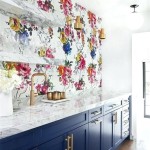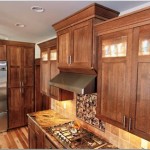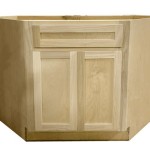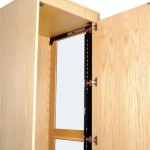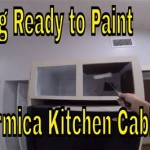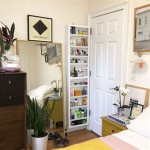Transform Your Kitchen With Repurposed Cabinets: The Magic of Color
Kitchen renovations are often among the most expensive home improvement projects. The cost of new cabinetry can be a significant barrier for many homeowners wanting to update their space. However, a cost-effective and environmentally conscious alternative exists: repurposing existing kitchen cabinets. While the idea of working with used cabinets might initially seem limiting, the strategic use of color can dramatically transform the aesthetic, imbuing them with a fresh, contemporary, or even vintage appeal. This article delves into the process of repurposing cabinets and how the intelligent application of color can revitalize a kitchen.
Repurposing kitchen cabinets involves a multifaceted approach. It starts with a thorough assessment of the existing cabinets to determine their structural integrity and suitability for the desired changes. Cabinets that are water damaged, severely warped, or exhibiting significant rot might not be suitable for repurposing. However, cabinets with superficial wear and tear, outdated hardware, or an undesirable finish can be successfully transformed. This process also aligns with sustainable living principles, minimizing waste and reducing the demand for new materials.
After determining that the existing cabinets are viable, the next step involves careful planning and preparation. This includes identifying the desired layout of the kitchen, considering any modifications that are necessary to accommodate new appliances or improve functionality, and, crucially, selecting the color palette that will define the new aesthetic. The color choice is not merely an aesthetic decision; it can influence the perceived size of the kitchen, the mood of the space, and the overall style. Light colors tend to make a kitchen feel larger and more open, while darker colors can create a more intimate and sophisticated ambiance. Ultimately, the color selection should complement the existing architectural features of the kitchen, the available natural light, and the homeowner's personal preferences.
The physical preparation of the cabinets for painting is a crucial step that directly impacts the quality and longevity of the finish. This typically involves removing hardware such as knobs, pulls, and hinges. The surfaces of the cabinets need to be thoroughly cleaned to remove grease, dirt, and any existing loose paint or varnish. A degreasing agent is often necessary for cabinets in areas prone to cooking splatters. Following the cleaning, sanding is critical to create a slightly textured surface that will allow the new paint to adhere properly. The level of sanding depends on the existing finish; glossy surfaces typically require more thorough sanding than matte finishes. Finally, a primer should be applied to ensure even coverage, promote adhesion, and block any potential bleed-through from the existing finish. The choice of primer should be appropriate for the type of paint being used.
Key Point 1: Choosing the Right Colors and Finishes
The selection of color and finish is paramount to achieving the desired transformation. The color palette should be cohesive and reflect the homeowner’s style and the overall design of the kitchen. Neutral colors, such as whites, grays, and beiges, offer a timeless and versatile foundation that can be easily complemented with colorful accents. These colors also tend to make smaller kitchens appear larger and brighter. For those seeking a bolder look, deeper colors such as navy blue, emerald green, or charcoal gray can create a dramatic and sophisticated effect. However, it is important to consider the amount of natural light available in the kitchen, as darker colors can make a poorly lit space feel even smaller and more enclosed.
Beyond the color itself, the finish of the paint plays a significant role in the overall aesthetic and durability of the cabinets. Different paint finishes offer varying levels of sheen and resistance to wear and tear. Matte finishes provide a soft, non-reflective look that can be ideal for concealing imperfections in the cabinet surface. However, they are less durable and more difficult to clean than other finishes. Satin finishes offer a balance between durability and sheen, making them a popular choice for kitchen cabinets. They are relatively easy to clean and provide a subtle, elegant look. Semi-gloss finishes are more durable and easier to clean than satin finishes, making them well-suited for high-traffic areas. However, they can highlight imperfections in the cabinet surface. High-gloss finishes are the most durable and easiest to clean, but they can also be the most unforgiving in terms of highlighting imperfections. The choice of finish should be based on a combination of aesthetic preferences and practical considerations.
Color trends in kitchen cabinetry are constantly evolving. Currently, two-tone kitchens are gaining popularity, where upper and lower cabinets are painted in different colors. This approach adds visual interest and can help to define different zones within the kitchen. For example, lower cabinets might be painted in a darker color to ground the space, while upper cabinets are painted in a lighter color to create a sense of airiness. Another trend is the use of natural wood tones, either as a complement to painted cabinets or as the primary finish. Natural wood tones add warmth and texture to the kitchen and can create a more organic and inviting atmosphere.
Key Point 2: Application Techniques for a Professional Look
The method of paint application significantly impacts the final appearance of the repurposed cabinets. While brush painting is a viable option, especially for detailed areas or smaller projects, spraying typically yields a smoother and more uniform finish, resembling that of factory-finished cabinets. Spraying can be achieved with a variety of tools, including airless sprayers, HVLP (high-volume, low-pressure) sprayers, and aerosol spray cans. Airless sprayers are generally preferred for larger projects due to their speed and efficiency. HVLP sprayers offer greater control and produce less overspray, making them suitable for more intricate work. Aerosol spray cans are a convenient option for small touch-ups or for painting hardware.
Regardless of the chosen application method, multiple thin coats of paint are always preferable to a single thick coat. Thick coats of paint are prone to runs, drips, and uneven drying, resulting in a less-than-professional finish. Thin coats, on the other hand, dry more quickly and evenly, minimizing the risk of imperfections. Each coat should be allowed to dry completely before the next coat is applied. Light sanding between coats can further enhance the smoothness of the finish.
Proper ventilation is crucial during the painting process, especially when using spray equipment. Paint fumes can be harmful to breathe, and adequate ventilation will help to minimize the risk of respiratory irritation. A well-ventilated area will also help the paint to dry more quickly and evenly. If possible, painting should be done outdoors or in a well-ventilated garage or workshop. If painting indoors, open windows and use fans to circulate the air. A respirator should be worn to protect against inhaling paint fumes.
Achieving a professional-looking finish also involves careful attention to detail. Edges and corners should be painted neatly and precisely. Painter’s tape can be used to mask off adjacent surfaces and create clean lines. Drips and runs should be addressed immediately to prevent them from drying and becoming permanent imperfections. After the final coat of paint has dried completely, the hardware can be reinstalled. New hardware can further enhance the transformed look of the cabinets and add a touch of personality to the kitchen.
Key Point 3: Enhancing Durability and Longevity
While aesthetics are important, the durability of the paint finish is equally crucial, especially in a high-use area like the kitchen. Applying a clear topcoat can significantly enhance the longevity of the painted cabinets. A topcoat provides an extra layer of protection against scratches, stains, and wear and tear. It also makes the cabinets easier to clean. Various types of topcoats are available, including water-based polyurethane, oil-based polyurethane, and acrylic lacquer. Water-based polyurethanes are low-VOC (volatile organic compound) and dry quickly, making them a popular choice for environmentally conscious homeowners. Oil-based polyurethanes offer superior durability but have a stronger odor and require longer drying times. Acrylic lacquers provide a very hard and durable finish but are best applied with a spray gun.
The number of topcoats applied will depend on the desired level of protection. Typically, two to three coats are sufficient for most kitchen cabinets. Each coat should be allowed to dry completely before the next coat is applied. Light sanding between coats can further enhance the smoothness of the finish.
Regular maintenance is essential for preserving the beauty and integrity of the painted cabinets. Cabinets should be cleaned regularly with a mild soap and water solution. Abrasive cleaners should be avoided, as they can scratch the finish. Spills and splatters should be wiped up immediately to prevent staining. Hardware should be tightened periodically to prevent it from becoming loose. Minor scratches and nicks can be touched up with a small amount of paint. By following these simple maintenance tips, homeowners can ensure that their repurposed and beautifully painted cabinets will remain in good condition for years to come.
Ultimately, the transformation of a kitchen through repurposed cabinets and the judicious use of color is a testament to the power of thoughtful design and resourcefulness. By carefully planning, preparing, and executing the painting process, homeowners can create a kitchen that is both aesthetically pleasing and functionally efficient, all while contributing to a more sustainable lifestyle. The process is rewarding, and the final product is a reflection of personal style and a commitment to responsible home improvement.

21 Diy Affordable Ways To Redo Kitchen Cabinets Extra Space Storage

10 Kitchen Cabinet Makeover Ideas

Kitchen Cabinet Colors For The Modern Homeowner Model Remodel

52 Best Kitchen Paint Color Ideas And Combinations For 2025

10 Simple Ideas To Update Your Kitchen Cabinets Jenna Sue Design

Diy 1950s Kitchen Remodel With Painted Cabinets Average But Inspired

69 Stylish Kitchen Cabinet Ideas 2025

10 Simple Ideas To Update Your Kitchen Cabinets Jenna Sue Design

5 Kitchen Cabinet Color Trends We Re Loving The Scout Guide

27 Designer Approved Green Kitchen Cabinet Ideas For 2025
Related Posts


